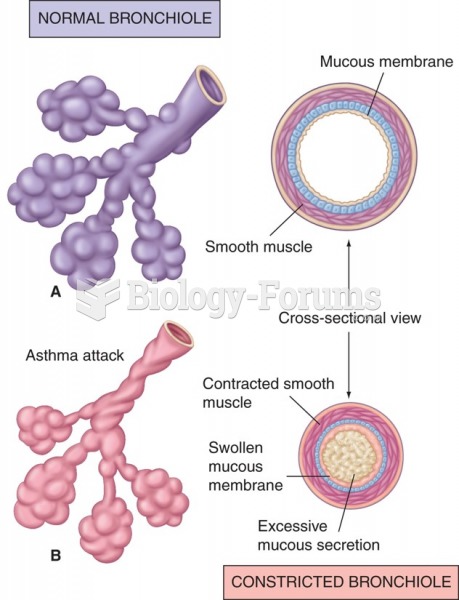|
|
|
If all the neurons in the human body were lined up, they would stretch more than 600 miles.
Bacteria have been found alive in a lake buried one half mile under ice in Antarctica.
Drug-induced pharmacodynamic effects manifested in older adults include drug-induced renal toxicity, which can be a major factor when these adults are experiencing other kidney problems.
An identified risk factor for osteoporosis is the intake of excessive amounts of vitamin A. Dietary intake of approximately double the recommended daily amount of vitamin A, by women, has been shown to reduce bone mineral density and increase the chances for hip fractures compared with women who consumed the recommended daily amount (or less) of vitamin A.
Eat fiber! A diet high in fiber can help lower cholesterol levels by as much as 10%.






